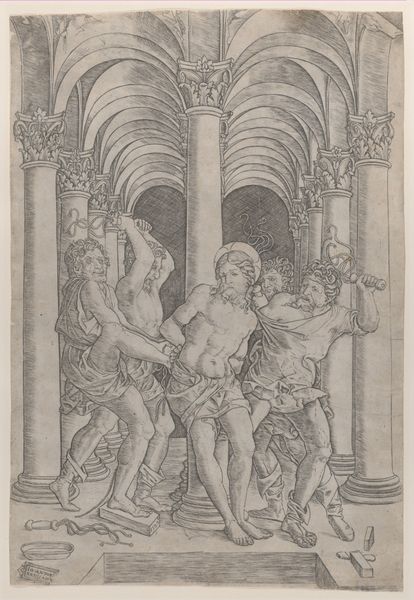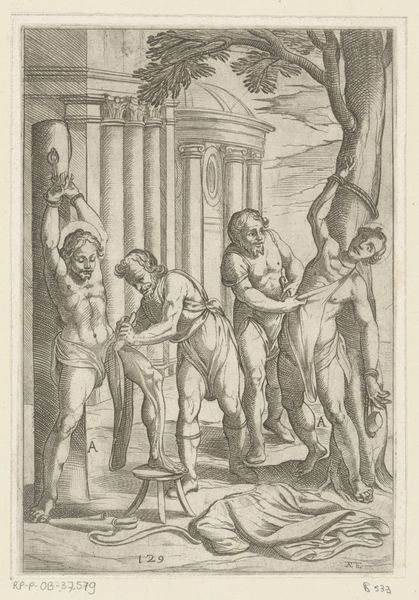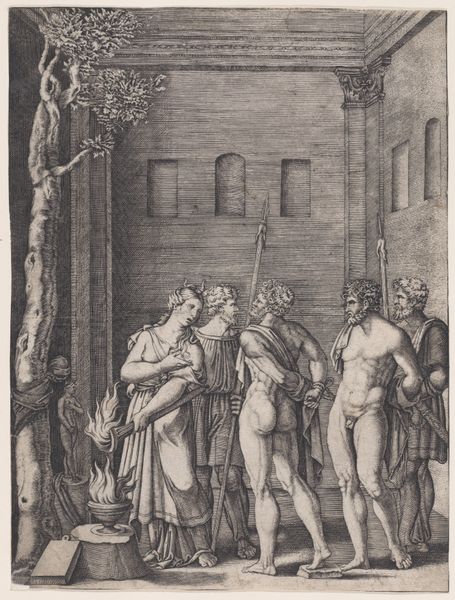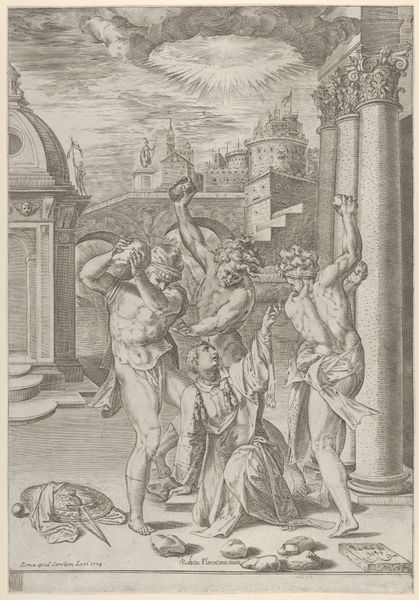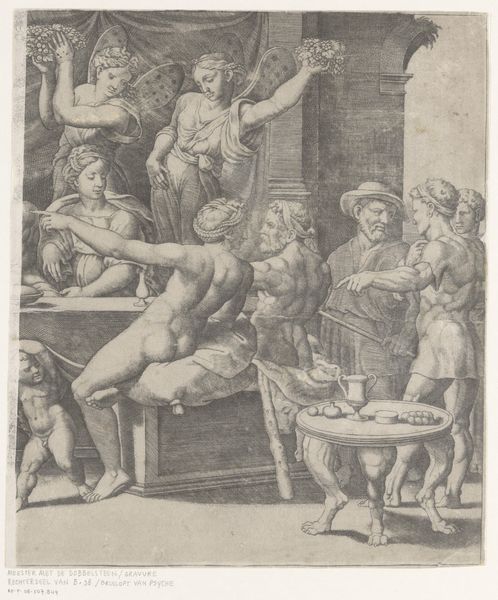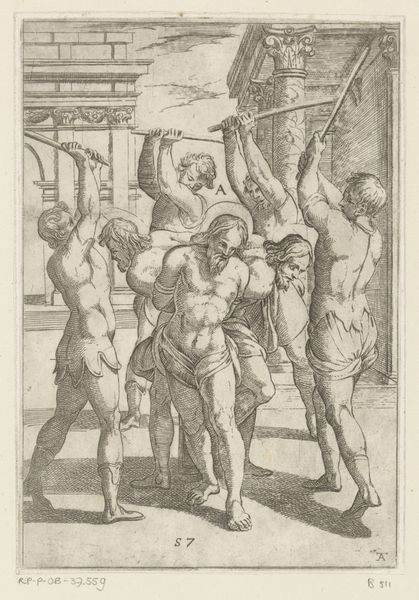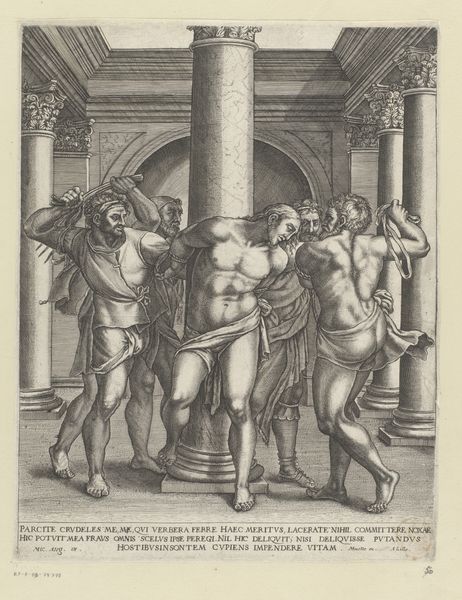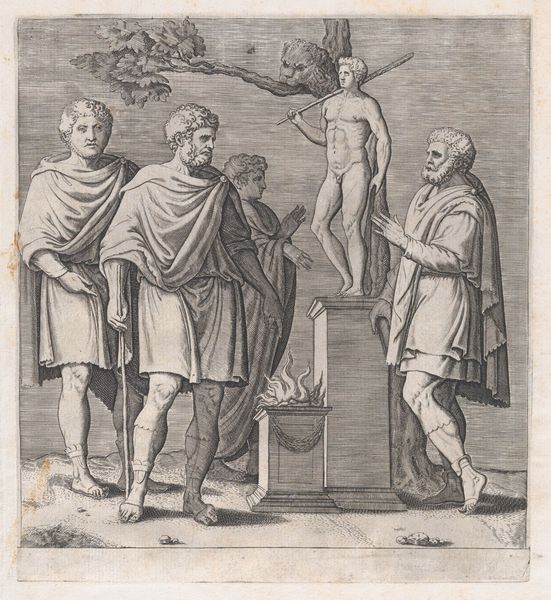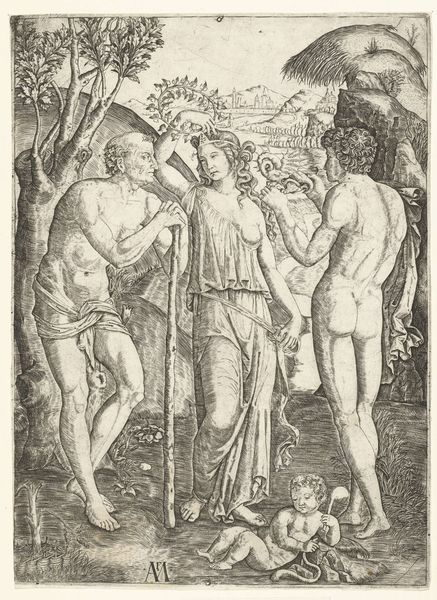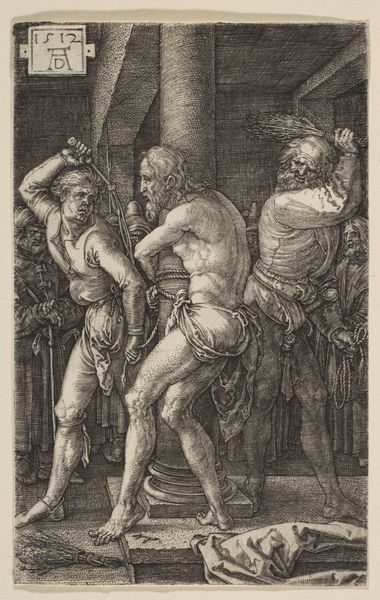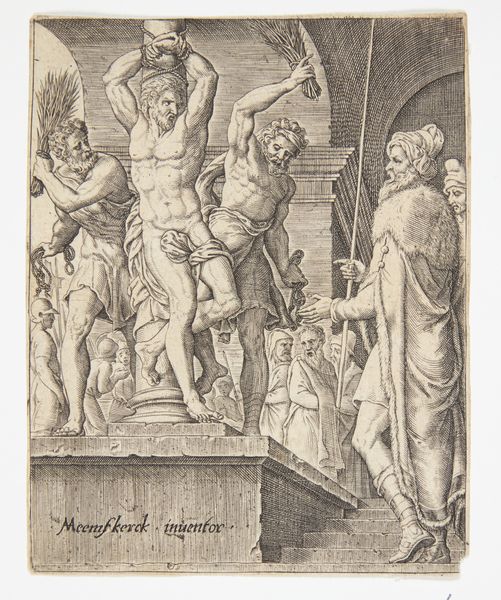
The Flagellation, plate 7 from the Life of the Virgin and Christ c. 1470
0:00
0:00
drawing, print, engraving
#
drawing
# print
#
figuration
#
history-painting
#
italian-renaissance
#
engraving
Dimensions: 223 × 163 mm (image/sheet)
Copyright: Public Domain
Curator: What a stark, unsettling image. The violence seems both staged and brutally intimate. Editor: Indeed. We’re looking at “The Flagellation, plate 7 from the Life of the Virgin and Christ,” an engraving by Francesco Rosselli from around 1470. The scene depicts Christ tied to a column, being whipped by two figures while onlookers observe from above. Curator: The column itself becomes a phallic symbol, doesn’t it? The subjugation isn't merely physical; it’s a deeper violation. I also see how the raised arms of the men, drawing back to lash Christ, mimics in the onlookers standing up and bearing witness, signifying a more pervasive social sanction. Editor: That's a compelling reading. Rosselli was working within the early Renaissance tradition, so this engraving served several purposes. It provided a visual aid for religious devotion and reinforced specific narratives from Christ’s life. Furthermore, printmaking like this made such imagery widely accessible. What might have been a contained courtly-only affair for some became part of an open culture available in workshops, and inns, which would encourage more popular interpretation. Curator: The architectural setting feels deliberately sterile, almost a theatrical space for the performance of power. Even the seemingly classical garb of the figures feels forced and stylized, more a costume than authentic attire, I suspect. Are we meant to draw parallels to the decay of a past Golden Age? Editor: Possibly, or simply to situate the event within a visual language of authority familiar to its audience. The placement of the figures, with Christ centrally positioned and the flagellators flanking him symmetrically, creates a deliberate, almost ceremonial composition that gives a particular status to Christ at center. Note the light from above spotlighting his position. What do you notice from the engraving? Curator: The lines themselves are fascinating. Look how Rosselli uses cross-hatching to build volume and create shadow, adding to the overall tension. There’s something disturbingly delicate about the execution. I see no blood on him, however. The meaning of the work rests solely on the act, on the intent, on the drama of power play rather than the physical suffering. The iconographical function appears front and center. Editor: Precisely. This artwork provides insight into the religious and cultural climate of Renaissance Italy. Curator: For me, Rosselli’s print embodies both the religious fervor and the growing humanist sensibilities of that era. Editor: Agreed. It prompts reflections about faith, power, and the visual representation of suffering in shaping cultural values and identity.
Comments
No comments
Be the first to comment and join the conversation on the ultimate creative platform.
